Black And Decker LCS1020 Handleiding
Black And Decker
Zaagmachine
LCS1020
Bekijk gratis de handleiding van Black And Decker LCS1020 (60 pagina’s), behorend tot de categorie Zaagmachine. Deze gids werd als nuttig beoordeeld door 16 mensen en kreeg gemiddeld 4.9 sterren uit 8.5 reviews. Heb je een vraag over Black And Decker LCS1020 of wil je andere gebruikers van dit product iets vragen? Stel een vraag
Pagina 1/60

20V MAX*, 40V MAX**
CORDLESS CHAIN SAW
Thank you for choosing BLACK+ ! DECKER
PLEASE READ BEFORE RETURNING THIS PRODUCT FOR ANY REASON.
If you have a question or experience a problem with your BLACK+ DECKER
purchase, go to http://www.blackanddecker.com/instantanswers
If you can’t find the answer or do not have access to the Internet, call 1-800-544-
6986 from 8 a.m. to 5 p.m. EST Mon. - Fri. to speak with an agent. Please have the
catalog number available when you call.
SAVE THIS MANUAL FOR FUTURE REFERENCE.
VEA EL ESPA OL EN LA CONTRAPORTADA. INSTRUCTIVO DE OPERACIÓN, CENTROS DE SERVICIO Y PÓLIZA DE N
GARANTÍA. ADVERTENCIA: LÉASE ESTE INSTRUCTIVO ANTES DE USAR EL PRODUCTO.
To register your new product, visit
www.BlackandDecker.com/NewOwner
KEY INFORMATION YOU SHOULD KNOW:
READ INSTRUCTIONS THOROUGHLY
BEFORE OPERATING!
• DO NOT OVER-TENSION CHAIN. Refer to “Adjusting Chain
Tension” for proper method of tensioning chain.
• Retighten chain frequently during first two hours of use.
INSTRUCTION MANUAL
CATALOG NUMBER
LCS1020 (20V MAX*)
CATALOG NUMBER
LCS1240 (40V MAX**)
*Maximum initial battery pack voltage (measured without
a workload) is 20 volts. The nominal voltage is 18.

2
GENERAL POWER TOOL
SAFETY WARNINGS
WARNING:
Read all safety warnings
and all instructions. Failure to follow the
warnings and instructions may result in
electric shock, fire and/or serious injury.
SAVE ALL WARNINGS AND
INSTRUCTIONS FOR FUTURE
REFERENCE
The term “power tool” in the warnings refers
to your mains-operated (corded) power tool
or battery-operated (cordless) power tool.
1) WORK AREA SAFETY
a) Keep work area clean and well lit.
Cluttered or dark areas invite accidents.
b) Do not operate power tools in explosive
atmospheres, such as in the presence
of flammable liquids, gases or dust.
Power tools create sparks which may
ignite the dust or fumes.
c) Keep children and bystanders
away while operating a power tool.
Distractions can cause you to lose control.
2) ELECTRICAL SAFETY
a) Power tool plugs must match the
outlet. Never modify the plug in
any way. Do not use any adapter
plugs with earthed (grounded)
power tools. Unmodified plugs and
matching outlets will reduce risk of
electric shock.
b) Avoid body contact with earthed or
grounded surfaces such as pipes,
radiators, ranges and refrigerators.
There is an increased risk of electric
shock if your body is earthed or
grounded.
c) Do not expose power tools to rain
or wet conditions. Water entering
a power tool will increase the risk of
electric shock.
d) Do not abuse the cord. Never use
the cord for carrying, pulling or
unplugging the power tool. Keep
cord away from heat, oil, sharp
edges or moving parts. Damaged or
entangled cords increase the risk of
electric shock.
e) When operating a power tool
outdoors, use an extension cord
suitable for outdoor use. Use of a
cord suitable for outdoor use reduces
the risk of electric shock.
f) If operating a power tool in a damp
location is unavoidable, use a
ground fault circuit interrupter
(GFCI) protected supply. Use of
a GFCI reduces the risk of electric
shock.
3) PERSONAL SAFETY
a) Stay alert, watch what you are
doing and use common sense
when operating a power tool. Do
not use a power tool while you
are tired or under the influence of
drugs, alcohol or medication. A
moment of inattention while operating
power tools may result in serious
personal injury.
b) Use personal protective equipment.
Always wear eye protection.
Protective equipment such as dust
mask, nonskid safety shoes, hard
hat, or hearing protection used for
appropriate conditions will reduce
personal injuries.
c) Prevent unintentional starting.
Ensure the switch is in the off
position before connecting to
power source and/ or battery pack,
picking up or carrying the tool.
Carrying power tools with your finger
on the switch or energizing power
tools that have the switch on invites
accidents.
d) Remove any adjusting key or
wrench before turning the power
tool on. A wrench or a key left
attached to a rotating part of the
power tool may result in personal
injury.
e) Do not overreach. Keep proper
footing and balance at all times.
This enables better control of the
power tool in unexpected situations.
f) Dress properly. Do not wear loose
clothing or jewelry. Keep your hair,
clothing and gloves away from
moving parts. Loose clothes, jewelry
or long hair can be caught in moving
parts.
SAFETY GUIDELINES - DEFINITIONS
It is important for you to read and understand this manual. The information it contains
relates to protecting YOUR SAFETY and PREVENTING PROBLEMS. The symbols
below are used to help you recognize this information.
DANGER: Indicates an imminently hazardous situation which, if not avoided, will
result in death or serious injury.
WARNING: Indicates a potentially hazardous situation which, if not avoided,
could result in death or serious injury.
CAUTION: Indicates a potentially haz ard ous situation which, if not avoided,
may result in minor or mod er ate injury.
NOTICE: Used without the safety alert symbol indicates potentially hazardous
situation which, if not avoided, may result in property damage.

3
g) If devices are provided for the
connection of dust extraction and
collection facilities, ensure these
are connected and properly used.
Use of dust collection can reduce
dust-related hazards.
4) POWER TOOL USE AND CARE
a) Do not force the power tool. Use
the correct power tool for your
application. The correct power tool
will do the job better and safer at the
rate for which it was designed.
b) Do not use the power tool if the
switch does not turn it on and
off. Any power tool that cannot
be controlled with the switch is
dangerous and must be repaired.
c) Disconnect the plug from the
power source and/or the battery
pack from the power tool before
making any adjustments, changing
accessories, or storing power
tools. Such preventive safety
measures reduce the risk of starting
the power tool accidentally.
d) Store idle power tools out of
the reach of children and do not
allow persons unfamiliar with the
power tool or these instructions
to operate the power tool. Power
tools are dangerous in the hands of
untrained users.
e) Maintain power tools. Check for
misalignment or binding of moving
parts, breakage of parts and any
other condition that may affect the
power tool’s operation. If damaged,
have the power tool repaired before
use. Many accidents are caused by
poorly maintained power tools.
f) Keep cutting tools sharp and clean.
Properly maintained cutting tools with
sharp cutting edges are less likely to
bind and are easier to control.
g) Use the power tool, accessories
and tool bits, etc. in accordance
with these instructions, taking into
account the working conditions
and the work to be performed.
Use of the power tool for operations
different from those intended could
result in a hazardous situation.
5) BATTERY TOOL USE AND CARE
a) Recharge only with the charger
specified by the manufacturer. A
charger that is suitable for one type of
battery pack may create a risk of fire
when used with another battery pack.
b) Use power tools only with
specifically designated battery
packs. Use of any other battery packs
may create a risk of injury and fire.
c) When battery pack is not in use,
keep it away from other metal
objects like paper clips, coins,
keys, nails, screws, or other small
metal objects that can make a
connection from one terminal
to another. Shorting the battery
terminals together may cause burns
or a fire.
d) Under abusive conditions, liquid
may be ejected from the battery,
avoid contact. If contact accidentally
occurs, flush with water. If liquid
contacts eyes, additionally seek
medical help. Liquid ejected from the
battery may cause irritation or burns.
6) SERVICE
a) Have your power tool serviced by a
qualified repair person using only
identical replacement parts. This
will ensure at the safety of the power
tool is maintained.
READ ALL INSTRUCTIONS
CHAIN SAW SAFETY
WARNINGS:
• Keep all parts of the body away from
the saw chain when the chain saw is
operating. Before you start the chain
saw, make sure the saw chain is not
contacting anything. A moment of
inattention while operating chain saws
may cause entanglement of your clothing
or body with the saw chain.
• Always hold the chain saw with your
right hand on the rear handle and
your left hand on the front handle.
Holding the chain saw with a reversed
hand configuration increases the risk of
personal injury and should never be done.
• Hold the power tool by insulated
gripping surfaces only, because the
saw chain may contact hidden wiring.
Saw chains contacting a “live” wire may
make exposed metal parts of the power
tool “live” and could give the operator an
electric shock.
• Wear safety glasses and hearing
protection. Further protective
equipment for head, hands, legs
and feet is recommended. Adequate
protective clothing will reduce personal
injury by flying debris or accidental
contact with the saw chain.
• Do not operate a chain saw in a tree.
Operation of a chain saw while up in a
tree may result in personal injury.
• Always keep proper footing and
operate the chain saw only when
standing on fixed, secure and level
surface. Slippery or unstable surfaces
such as ladders may cause a loss of
balance or control of the chain saw.
• When cutting a limb that is under
tension be alert for spring back. When
the tension in the wood fibers is released
the spring loaded limb may strike the
operator and/or throw the chain saw out
of control.
• Use extreme caution when cutting
Product specificaties
| Merk: | Black And Decker |
| Categorie: | Zaagmachine |
| Model: | LCS1020 |
Heb je hulp nodig?
Als je hulp nodig hebt met Black And Decker LCS1020 stel dan hieronder een vraag en andere gebruikers zullen je antwoorden
Handleiding Zaagmachine Black And Decker

26 Augustus 2024

26 Augustus 2024

28 Juni 2024

17 Augustus 2023

6 Juli 2023

18 Juni 2023

17 Juni 2023

16 Juni 2023

12 Juni 2023

11 Juni 2023
Handleiding Zaagmachine
- Ergofix
- EGO
- FIXIT
- Yellow Garden Line
- Shindaiwa
- Lionelo
- McCulloch
- Bebe Confort
- Ozito
- Ergotools Pattfield
- Florabest
- Fieldmann
- Solo
- Zipper
- Dexter
Nieuwste handleidingen voor Zaagmachine
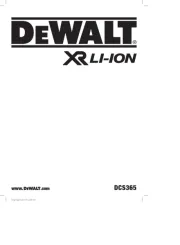
3 Augustus 2025
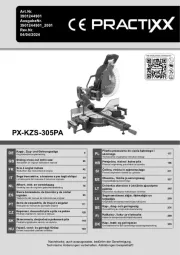
30 Juli 2025
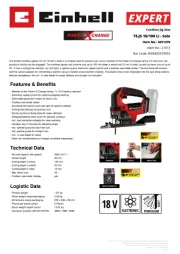
29 Juli 2025
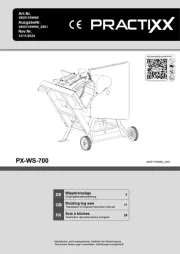
29 Juli 2025
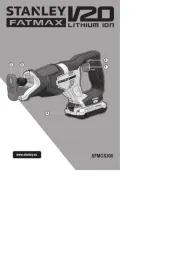
29 Juli 2025
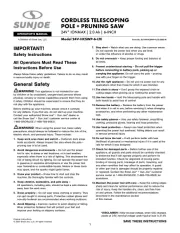
29 Juli 2025
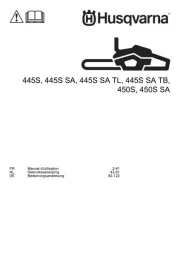
28 Juli 2025
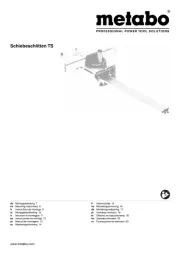
23 Juli 2025
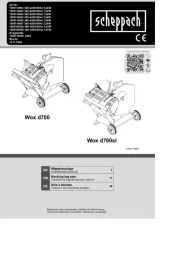
21 Juli 2025
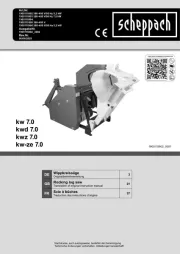
21 Juli 2025